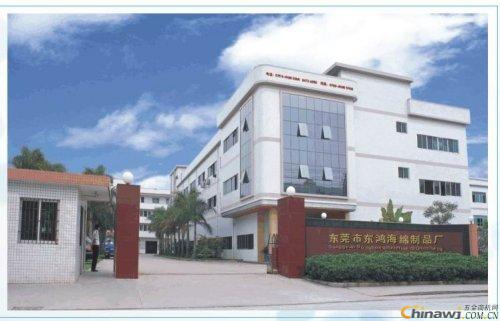How to Identify the Quality of a Sponge (Provided by Donghong Sponge Factory, 0769-8186 0358)
When it comes to evaluating sponge quality, two key technical indicators are density and rebound index. These factors directly affect the comfort, durability, and overall performance of the sponge. Understanding them can help you make an informed choice when purchasing sponge products.
**1. Density** Density is one of the most important factors in determining sponge quality. A higher density usually means better quality, as it provides greater flexibility, support, and comfort. On the other hand, low-density sponges tend to lose their shape quickly—either collapsing under pressure or becoming flat after just a few months of use. In some cases, they may even feel like sitting on a hard surface without any give.
To measure the density of a sponge, you can follow this simple method:
**Test Equipment:** A piece of sponge, a glass of water, a measuring cylinder, a balance, and sand.
**Test Purpose:** Calculate the sponge’s density using the formula: Ï = m / V
**Test Procedure:** 1. Place the sponge and sand together on the balance and record the total mass as M. 2. Remove the sponge and measure the mass of the sand alone, recording it as m_sand. 3. Calculate the mass of the sponge: m_sponge = M - m_sand. 4. Pour water into the measuring cylinder and note the initial volume V0. 5. Submerge the sponge in the water and wait until the water level stabilizes. Record the new volume as V1. 6. Calculate the volume of the sponge: V_sponge = V0 - V1. 7. Finally, calculate the density using the formula: Ï = m_sponge / V_sponge = (M - m_sand) / (V0 - V1).
**2. Rebound Index** The rebound index measures how quickly a sponge returns to its original shape after being compressed. High-quality sponges have excellent elasticity and resilience, meaning they bounce back quickly and resist deformation over time. Poor-quality sponges, however, tend to flatten out and lose their shape within a year or two, making them uncomfortable and less durable.
While a Shore C meter is commonly used to measure hardness (typically in three segments: 70/50/20), in practical situations, the best way to assess quality is through direct touch and experience. For example, when choosing sofa cushions, the national standard for cushion fillings is around 25 kg/m³, while the international standard is about 35 kg/m³. Most reputable manufacturers now use high-resilience sponges with a density of 30 kg/m³ or more, often filled as a single piece for better support. The best option combines high-resilience sponge with a mix of down or rayon for added softness and longevity.
When selecting a sponge product, always ask about the type of filling used. If it's sponge, find out the exact density. Use your hands to test the rebound effect, and sit on it to evaluate the comfort level.
For more information or inquiries, please contact Miss Wu at 13731313676 or via QQ.

When it comes to evaluating sponge quality, two key technical indicators are density and rebound index. These factors directly affect the comfort, durability, and overall performance of the sponge. Understanding them can help you make an informed choice when purchasing sponge products.
**1. Density** Density is one of the most important factors in determining sponge quality. A higher density usually means better quality, as it provides greater flexibility, support, and comfort. On the other hand, low-density sponges tend to lose their shape quickly—either collapsing under pressure or becoming flat after just a few months of use. In some cases, they may even feel like sitting on a hard surface without any give.
To measure the density of a sponge, you can follow this simple method:
**Test Equipment:** A piece of sponge, a glass of water, a measuring cylinder, a balance, and sand.
**Test Purpose:** Calculate the sponge’s density using the formula: Ï = m / V
**Test Procedure:** 1. Place the sponge and sand together on the balance and record the total mass as M. 2. Remove the sponge and measure the mass of the sand alone, recording it as m_sand. 3. Calculate the mass of the sponge: m_sponge = M - m_sand. 4. Pour water into the measuring cylinder and note the initial volume V0. 5. Submerge the sponge in the water and wait until the water level stabilizes. Record the new volume as V1. 6. Calculate the volume of the sponge: V_sponge = V0 - V1. 7. Finally, calculate the density using the formula: Ï = m_sponge / V_sponge = (M - m_sand) / (V0 - V1).
**2. Rebound Index** The rebound index measures how quickly a sponge returns to its original shape after being compressed. High-quality sponges have excellent elasticity and resilience, meaning they bounce back quickly and resist deformation over time. Poor-quality sponges, however, tend to flatten out and lose their shape within a year or two, making them uncomfortable and less durable.
While a Shore C meter is commonly used to measure hardness (typically in three segments: 70/50/20), in practical situations, the best way to assess quality is through direct touch and experience. For example, when choosing sofa cushions, the national standard for cushion fillings is around 25 kg/m³, while the international standard is about 35 kg/m³. Most reputable manufacturers now use high-resilience sponges with a density of 30 kg/m³ or more, often filled as a single piece for better support. The best option combines high-resilience sponge with a mix of down or rayon for added softness and longevity.
When selecting a sponge product, always ask about the type of filling used. If it's sponge, find out the exact density. Use your hands to test the rebound effect, and sit on it to evaluate the comfort level.
For more information or inquiries, please contact Miss Wu at 13731313676 or via QQ.

Intelligent Local Ventilation Fan
Explosion-proof Axial Flow Fan for Coal Mines,Energy-saving Axial Flow Fans for Coal Mine,Metal Mine Ventilation Fan
Yuncheng Anhong Enery-saving Explosion-proof Fan Co.,Ltd. , https://www.anhongfengji.com